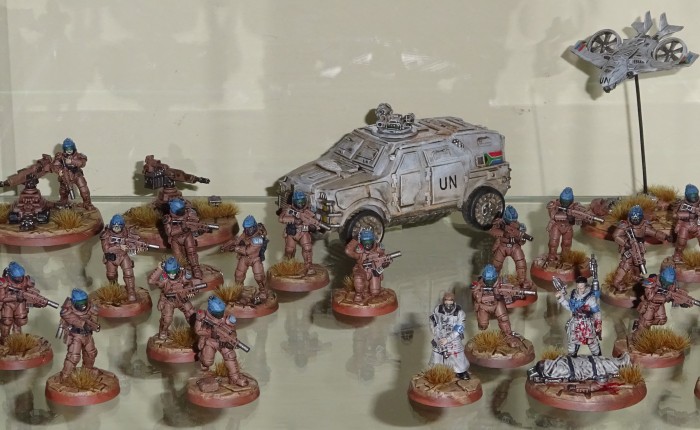When writing Xenos, I’ve split the sample detachments (of which there are currently 37) into five different science fiction genres, as rambled about in my last post, Beware of the Xenos.
The first of these settings, chronologically, is Weird War Two. The Xenos rules cover skirmish battles from the early 20th Century onwards, and I decided to resist the urge to pick up some First World War models, although there’s a Mark IV tank sat in my cabinet that might end up in a steampunk space opera force at some point…
Because the scale of Xenos is smaller than a mass battle, we’ve tried not to refer to the forces used as ‘armies’, since they’re generally about platoon-sized. After some thought, we’ve settled on ‘detachment’, as it’s a nicely generic term that applies just as well to soldiers with bolt action rifles as it does to those with plasma guns or phasers. (Maybe less so with post-apocalyptic barbarians or unspeakably ancient sentient rocks, but you’ve got to draw a line somewhere.)
The first two detachments I’ve put together for this setting are a group of conventional (i.e. nothing wibbly and alien) Soviet Red Army troops, and a very much unconventional group of occult SS, as you’ve seen in lots of period horror films, Indiana Jones and the Wolfenstein video games. Let’s do the Soviets first.
As a side-note, the detachments I’m listing are all 24-point forces, which is the assumed standard size of game for Xenos. (You can go smaller or bigger, and I’ve written guidelines for fielding multiple detachments.) I’ve not given points costs here, because a) they don’t mean much to the average reader, who’s not read the rules, and b) they’re work-in-progress and so might change, potentially dramatically, before eventual publication.
Overall, the Soviet force is an experiment in fielding lots of infantry. Xenos uses a single generic army list, where each unit type fulfills a role in the game, and allows players to customise units with upgrades, downgrades and special rules (aka Xeno Rules), so several units in this list were made cheaper by purchasing the Recruit option, which makes them more likely to run away when they start taking fire or suffering casualties. Although the campaign system in Xenos doesn’t include the development of individual units’ experience, it does allow for detachments to increase their overall points value, thus allowing you to ‘buy off’ downgrades if you feature the same units in future games, as either regular or upgraded veteran troops.
(Most of the models in this detachment are from Warlord Games‘ Bolt Action range, with the exception of the female soldiers, who are from Bad Squiddo Games. Although the latter models’ scale is very slightly smaller, it’s not overly noticeable, particularly since you can just assume the female soldiers are less heavily-built than their male comrades.)
Command HQ (Light Infantry – Commander, Brutal Leader, Close Quarters Doctrine, Fire Support)
All detachments in Xenos must upgrade one unit, for free, to be the Commander. The Commander, similar to Leader units in Lion or Dragon Rampant, rolls a random Commander Trait, representing their personality and how that affects the functioning of their troops on the battlefield. Although some are good and some are bad, none are truly devastating. They just provide a bit of flavour. It’s not entirely random though; you get to pick which of four charts you roll your Commander Trait from: Aggressive, Tactical, Strategic and Warlord.
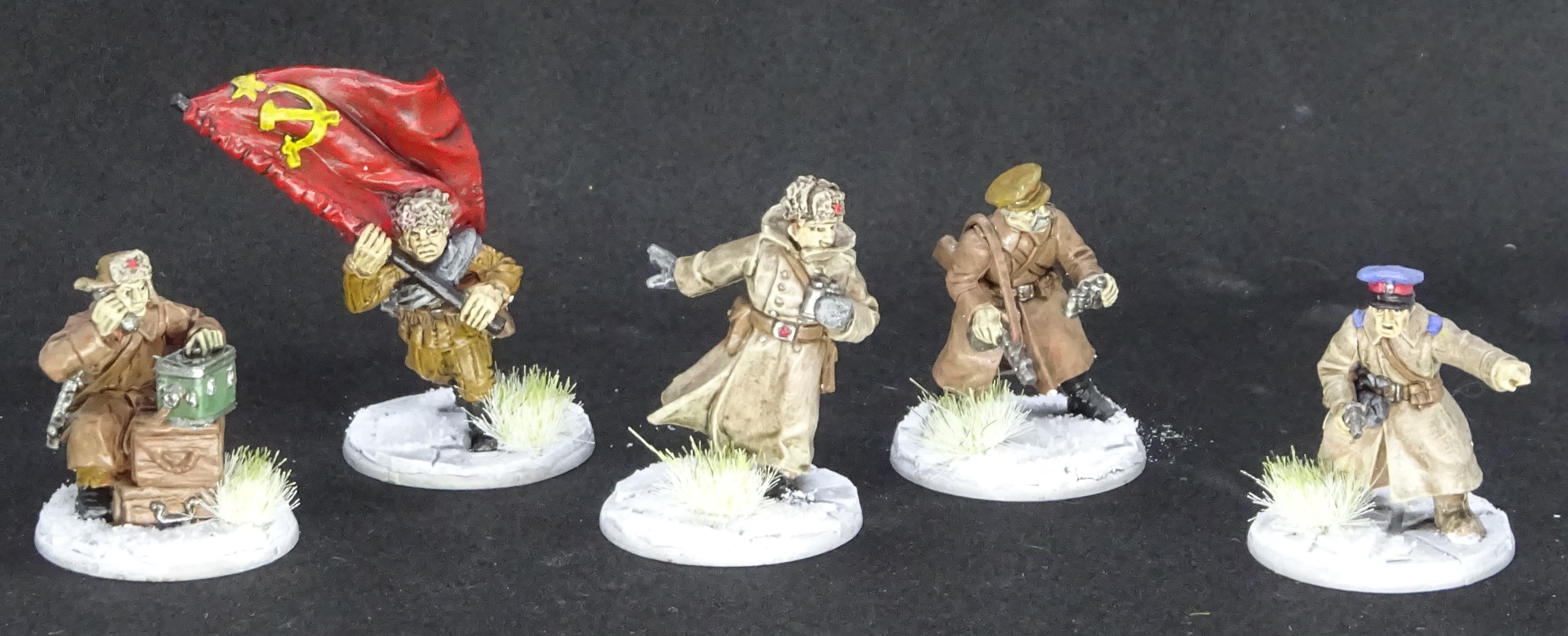
These Soviets have a Light Infantry unit for their Commander, upgraded with the Brutal Leader and Fire Support Xeno Rules. The former (represented in this unit by the angry-looking NKVD officer with the blue cap and pointy finger) lets you re-roll failed Courage tests for nearby units that would otherwise become Suppressed… but at the cost of one of their soldiers getting executed by the Commander unit. Fire Support, represented by the radio operator and the two officers with binoculars, allows the unit to call in off-table artillery barrages on an enemy unit within line of sight. It’s a powerful action, but difficult to activate successfully.
(As a side-note, although various upgrades have been represented on the models used, this is just a cosmetic thing. Upgrades and Xeno Rules remain in force throughout the unit’s existence on the battlefield, regardless of which models have been removed as casualties. It just keeps the rules simple.)
Light Infantry are assumed to be armed with rifle-style weapons, but since the biggest guns these guys have are a couple of submachine guns and pistols, the unit’s been downgraded to have Close Quarters Doctrine, which just reduces their range. This also counteracts the extreme cost of Fire Support.
In game terms, this unit hangs back, dropping artillery barrages on any enemies it sees, but tries to stay close enough to the advance to provide the Commander’s usual boost to morale or, failing that, a bullet to the head of any coward who betrays the Soviet Union.
2x Rifle squads (Light Infantry – Increased Squad Size, Recruits)

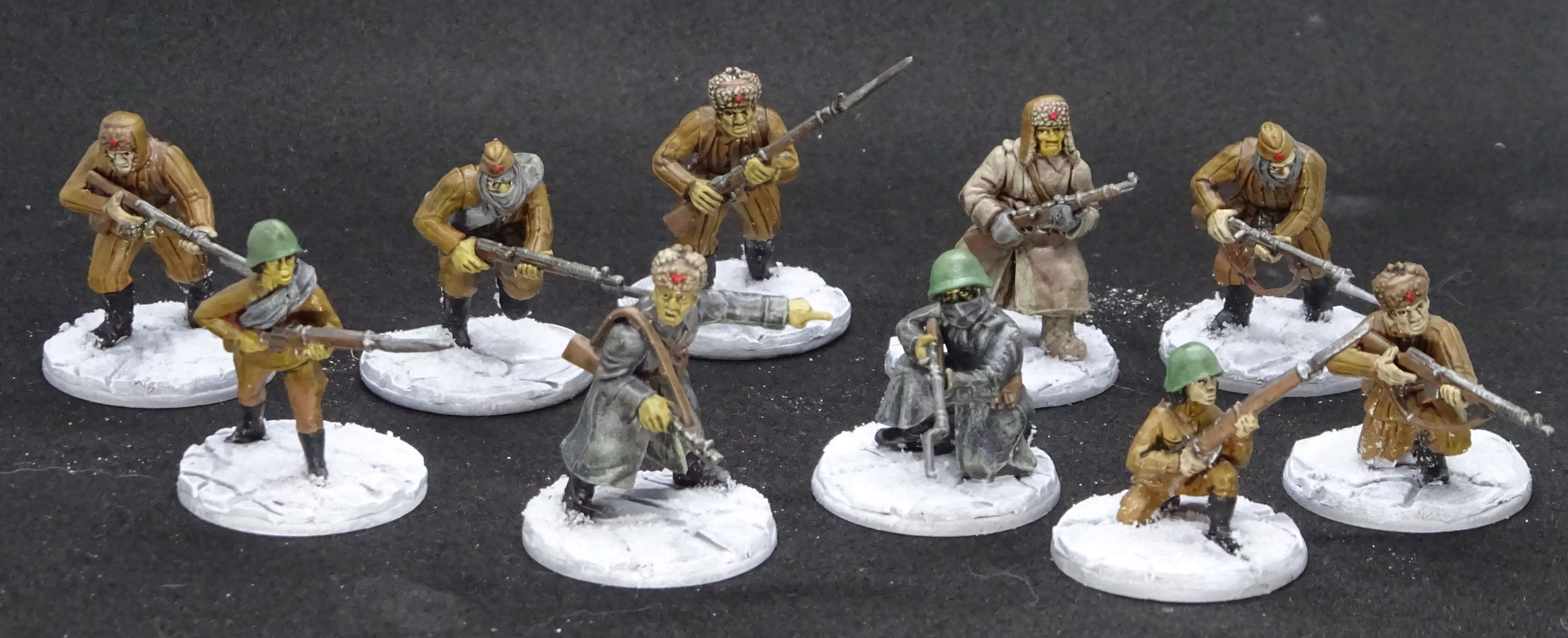 Not so much the backbone of the army as meat for the grinder, these two units of Light Infantry are there to seize objectives and get shot at in preference to more valuable units. Most units in Xenos begin with 5 Strength Points, which in the case of regular humans tends to represent one soldier (elite troops, heroes or monstrous aliens might have a different ratio of SP to models). This unit has been upgraded in size to 10 SP, which increases its ability to absorb casualties and also marginally enhances its effectiveness in battle (ten rifles are better than five, after all). As mentioned earlier, the Recruit downgrade makes them more likely to run away when they do start taking casualties though, meaning that it’s a good idea to keep the Commander and his NKVD sidekick nearby.
Not so much the backbone of the army as meat for the grinder, these two units of Light Infantry are there to seize objectives and get shot at in preference to more valuable units. Most units in Xenos begin with 5 Strength Points, which in the case of regular humans tends to represent one soldier (elite troops, heroes or monstrous aliens might have a different ratio of SP to models). This unit has been upgraded in size to 10 SP, which increases its ability to absorb casualties and also marginally enhances its effectiveness in battle (ten rifles are better than five, after all). As mentioned earlier, the Recruit downgrade makes them more likely to run away when they do start taking casualties though, meaning that it’s a good idea to keep the Commander and his NKVD sidekick nearby.
Veterans in Snow Suits (Heavy Infantry – Increased Squad Size, Armour-Piercing)
 These are the guys that are the actual backbone of the army, being hardened veterans of Stalingrad, Kursk or other battles that turned the tide against the fascists. Like the rifle squads above, these veterans have been increased to 10 Strength Points, but they’ve also been bought the Armour-Piercing upgrade, representing those panzerfaust rocket-propelled grenades they’ve looted from retreating Germans. Armour-Piercing reduces the enemy’s Armour stat by 1, reducing the number of hits the unit needs to cause casualties on the enemy. I could have added Heavy Weapon to the unit as well, for the light machine gun they’ve got, but I decided to keep the unit’s cost down a bit. There’s space there for a potential upgrade later in the campaign.
These are the guys that are the actual backbone of the army, being hardened veterans of Stalingrad, Kursk or other battles that turned the tide against the fascists. Like the rifle squads above, these veterans have been increased to 10 Strength Points, but they’ve also been bought the Armour-Piercing upgrade, representing those panzerfaust rocket-propelled grenades they’ve looted from retreating Germans. Armour-Piercing reduces the enemy’s Armour stat by 1, reducing the number of hits the unit needs to cause casualties on the enemy. I could have added Heavy Weapon to the unit as well, for the light machine gun they’ve got, but I decided to keep the unit’s cost down a bit. There’s space there for a potential upgrade later in the campaign.
Heavy Infantry are slower-moving than Light Infantry, but are more resilient (they have an extra point of Armour). The biggest difference though is that they have Shoot as their Free Action, rather than Light Infantry’s Move. This gives them a different combat role. The rifle squads storm the enemy lines, seizing objectives, while the veterans take on tougher enemy units or defend ground that’s already been taken.
(Incidentally, I normally paint models using a base coat, drybrush/highlight and then a Quickshade ink wash, before doing the snowy base, which isn’t Quickshaded, separately. That’s how I did the rest of the detachment. This squad worked a little differently, as I wanted their snow suits to match the terrain they’re playing on. I painted their faces, weapons and equipment the normal way, including Quickshade, and then painted their snow suits at the same time as I did their bases. I think it works quite well.)
Shock Troops (Berserk Infantry – Increased Squad Size, Demolitions)

The Red Army had entire units armed with modern submachine guns, which helped them on the offensive, as they can be fired from the hip more easily than a rifle. I could have fielded these models as a Light Infantry unit with Close Quarters Doctrine, but instead I went for Berserk Infantry (again bulked up to 10 SP). Berserk Infantry always have a shorter range than other infantry types, as they’re either not equipped for ranged combat (as with these guys) or they just can’t shoot straight due to being frothing berserkers.
Aside from being better than other infantry types at hand-to-hand combat (or, in this unit’s case, point-blank automatic shooting followed by bludgeoning with heavy wooden stocks), Berserk Infantry also have the Wild Charge rule. This means that if there is an enemy unit within movement range, they must attempt an Attack action to charge it.
Something this detachment lacks is anti-tank weaponry, which is something the Soviet Union lacked throughout the war (and why so many German panzerfausts were looted from the battlefield). This squad attempts to remedy that by being armed with anti-tank grenades and Molotov cocktails (aka the Demolitions upgrade), which allows them to halve the Armour value of any enemy vehicles or buildings they attack in hand-to-hand combat.
Maxim Machine Gun Section (Support Infantry)

The Soviets lacked modern machine guns for most of the war, instead relying on old-fashioned Maxims as used by other nations in the First World War and earlier.
Support Infantry are very good at shooting. There are various options available for different kinds of shooting (mortars, flamethrowers, light artillery and so on), but machine gun teams are the most basic Support Infantry, so no upgrades are needed. The officer leading the section is painted in an NKVD cap, because I’ve seen Enemy at the Gates. If I expand the army in size, I may add Brutal Leader to this unit, so that they can act as a ‘barrier unit’ and deter allies from fleeing.
Spare Models
 That’s the end of the 24-point detachment, but I enjoyed painting the Soviets so much that I threw together a few more models. They’re not really units in their own right, but can be swapped out for individual models from other units to represent various upgrades.
That’s the end of the 24-point detachment, but I enjoyed painting the Soviets so much that I threw together a few more models. They’re not really units in their own right, but can be swapped out for individual models from other units to represent various upgrades.
The light machine gunners can add Heavy Weapon to the Light Infantry units, while the NKVD officer bravely lying in the snow while looking for cowards who hide in the snow can add Brutal Leader to any unit that wants the privilege of being watched over by a murderous communist.
Finally, the medic adds the Combat Medic Xeno Rule to a unit, which can reduce the number of casualties taken by nearby friendly units. With the number of Light Infantry units in this detachment, that might be pretty useful.
And finally, a T34 (Fighting Vehicle)
 Although there was no space in the 24-point detachment for any vehicles, and the theme of it was a swarm of infantry, I couldn’t resist adding a tank, which can be swapped in or out of the army depending on the mission of a given game. If I expand the army to a second detachment, it’ll become a permanent presence.
Although there was no space in the 24-point detachment for any vehicles, and the theme of it was a swarm of infantry, I couldn’t resist adding a tank, which can be swapped in or out of the army depending on the mission of a given game. If I expand the army to a second detachment, it’ll become a permanent presence.
Vehicles come in multiple types, which are currently Fighting, Transport and Recon. The different vehicle types are currently undergoing a bit of a redraft (previously, Fighting and Transport were Heavy and Light), but suffice to say this is a heavily-armoured unit that has the Anti-Tank and Demolitions rules, which makes it far more effective at popping enemy tanks than anything else in the army.
Next up: The sorcerous SS of the Schülers faction.

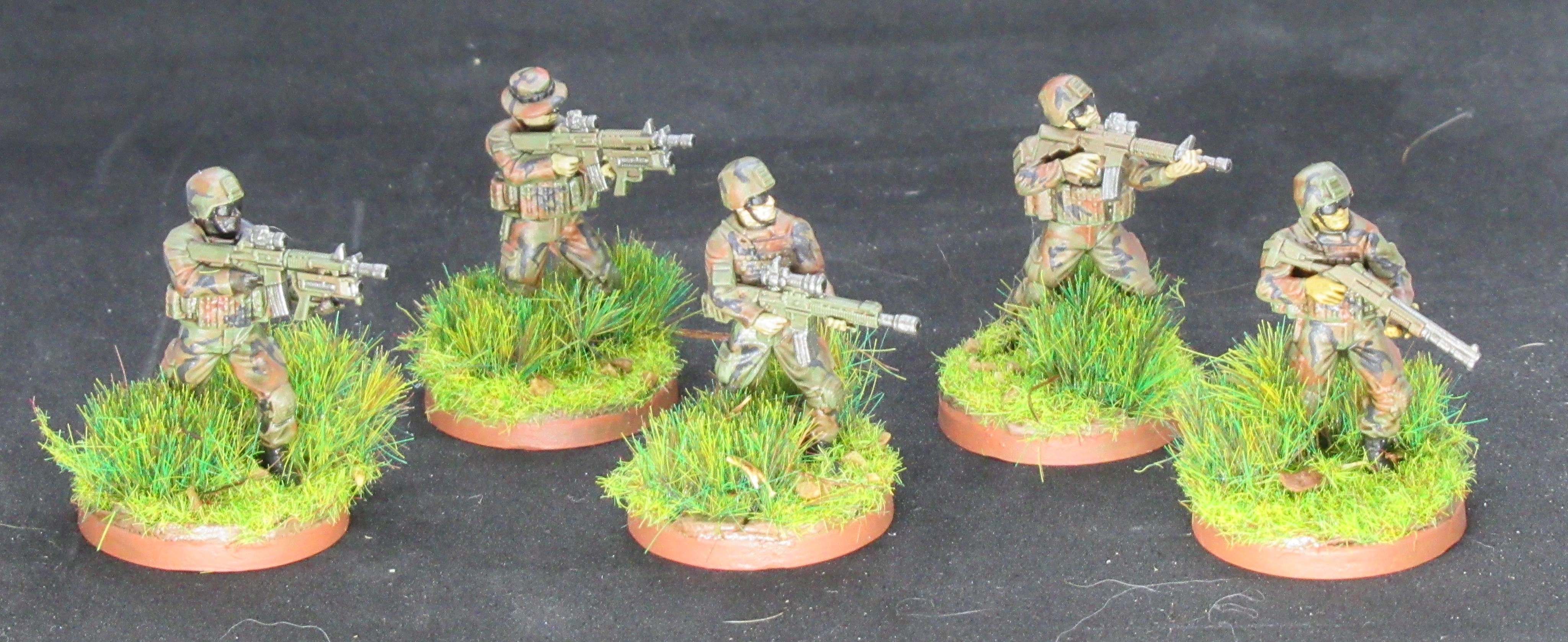


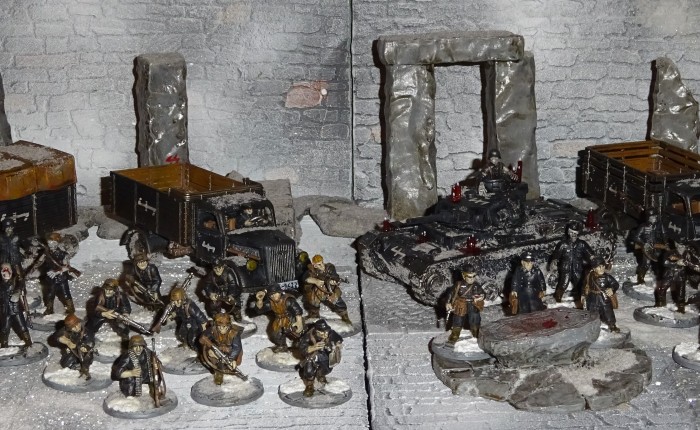
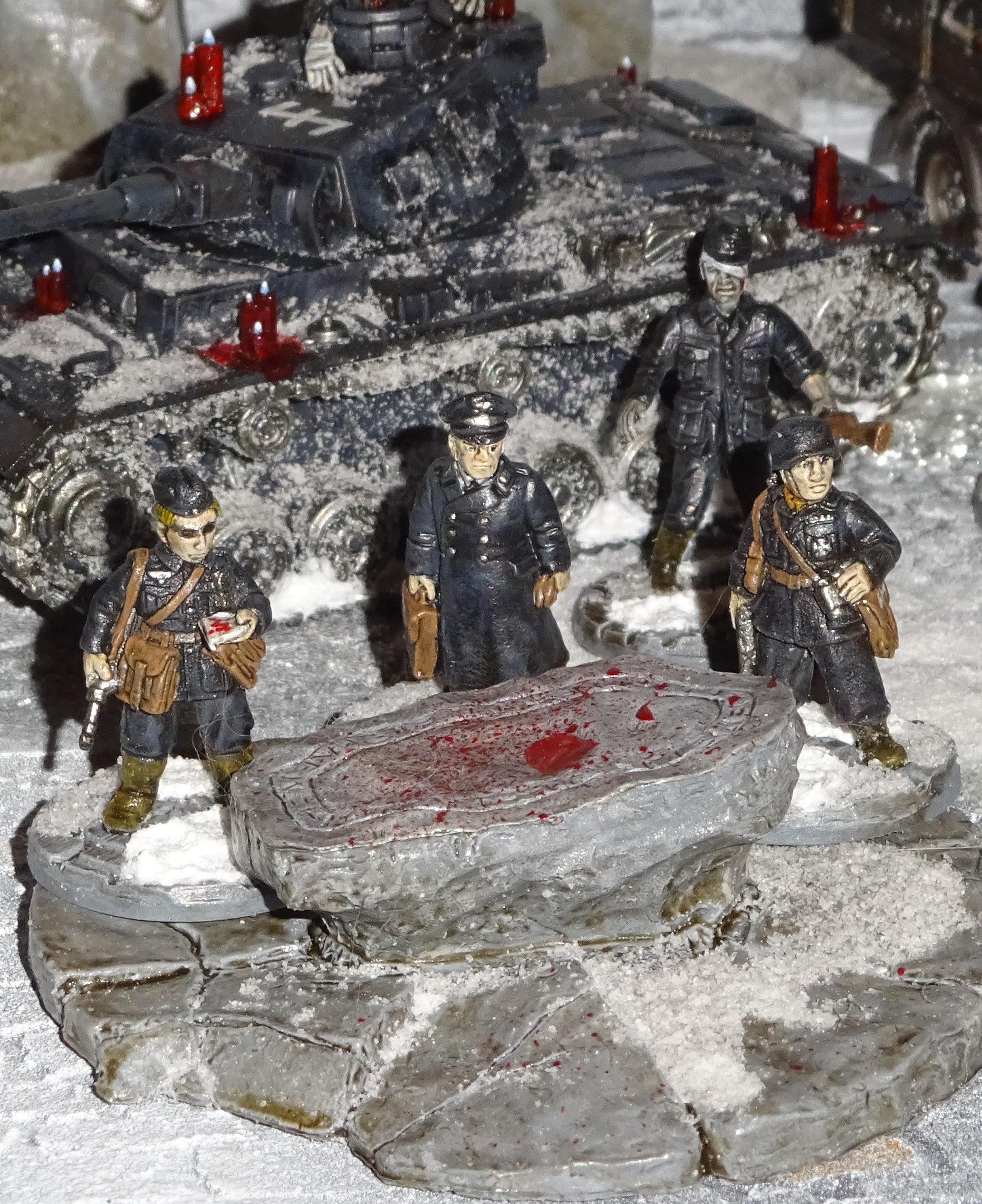
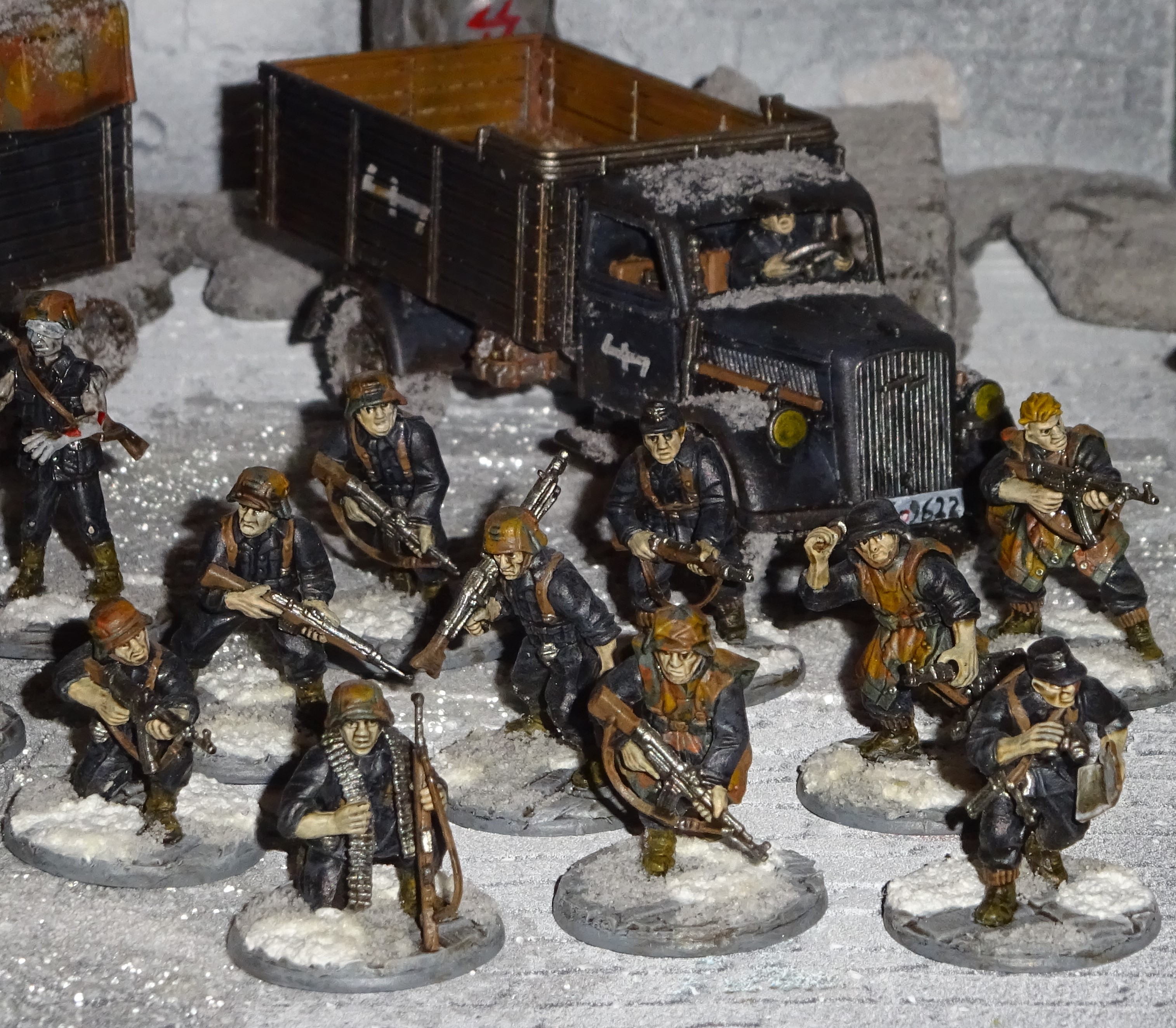
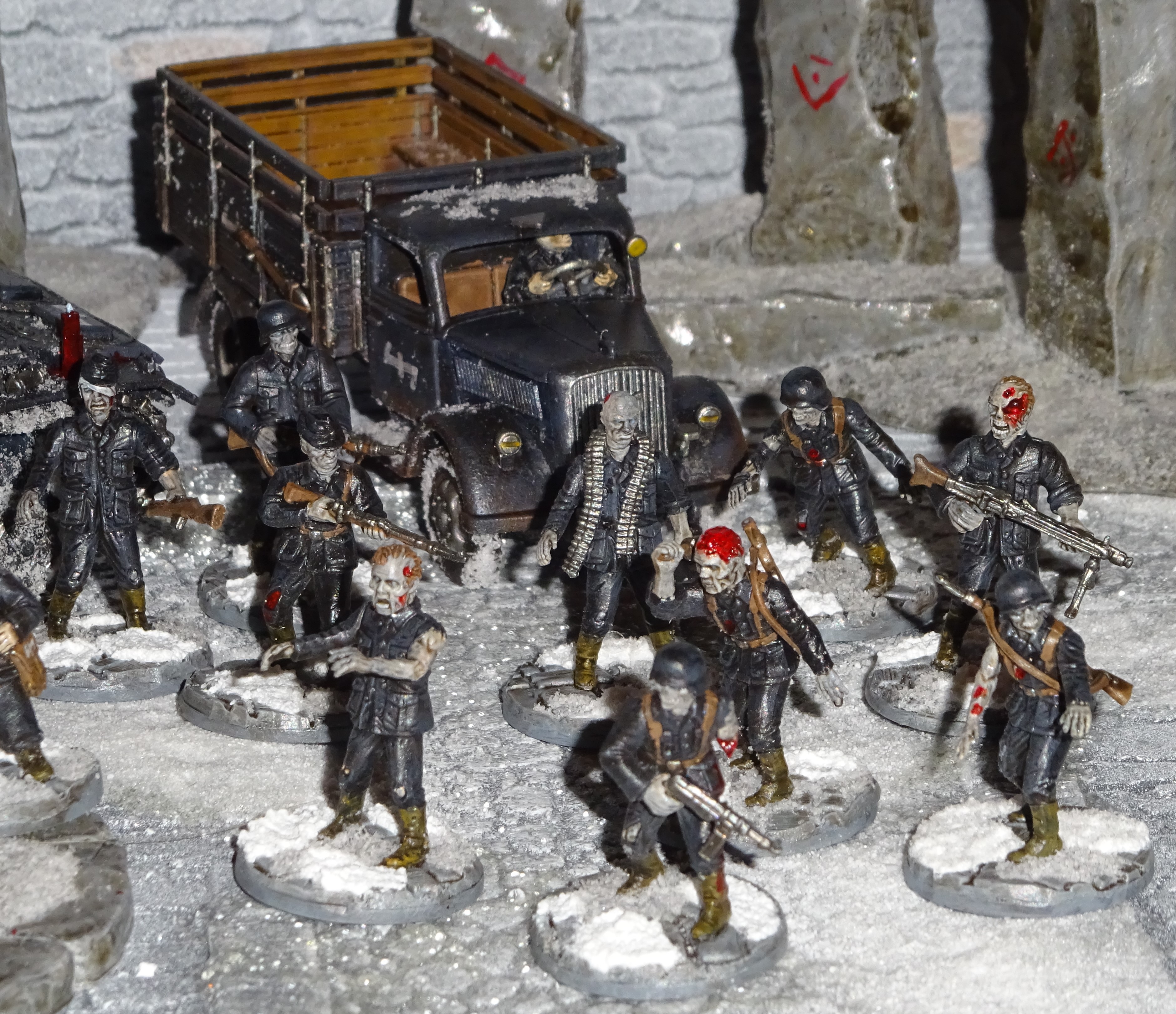
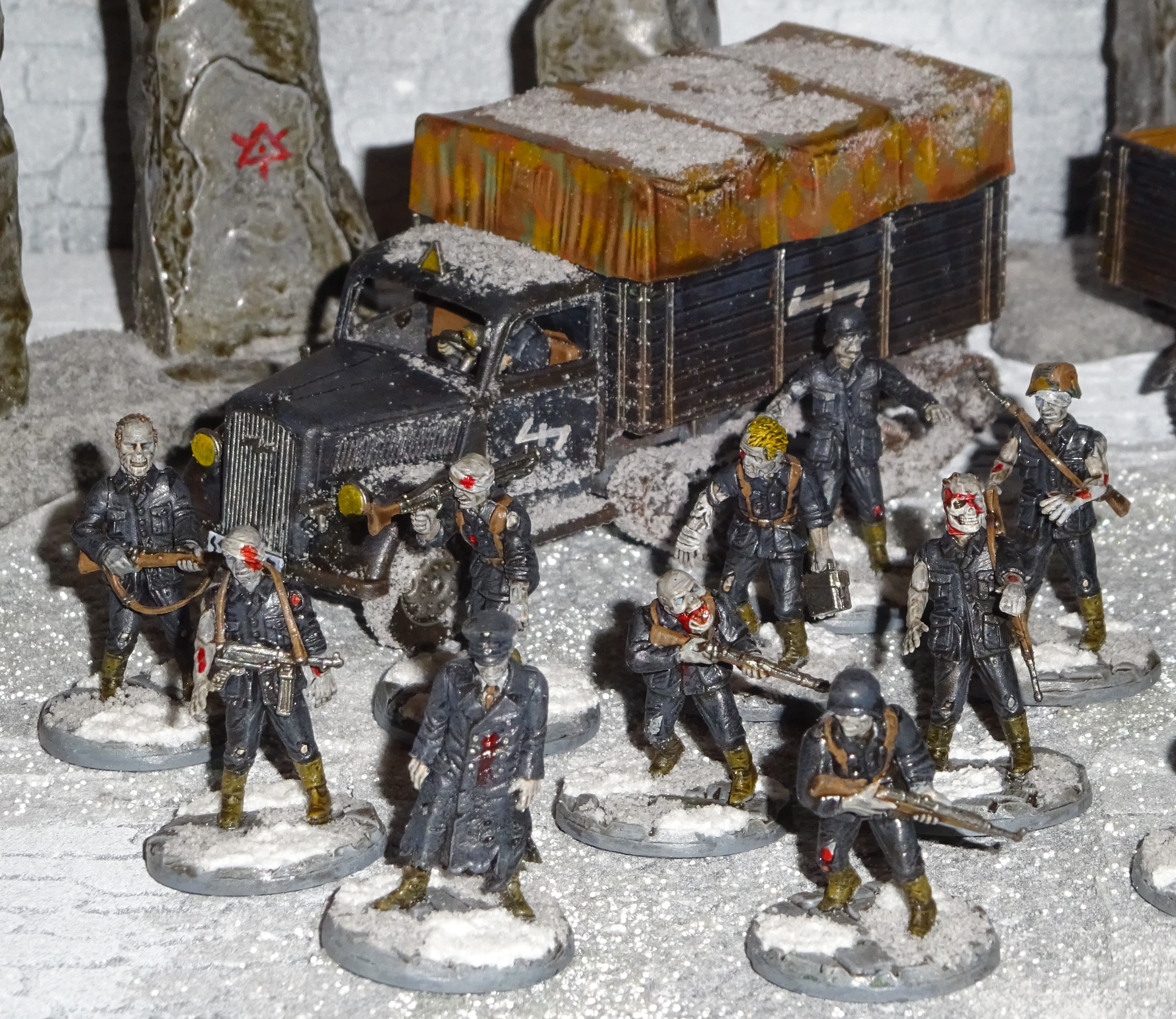


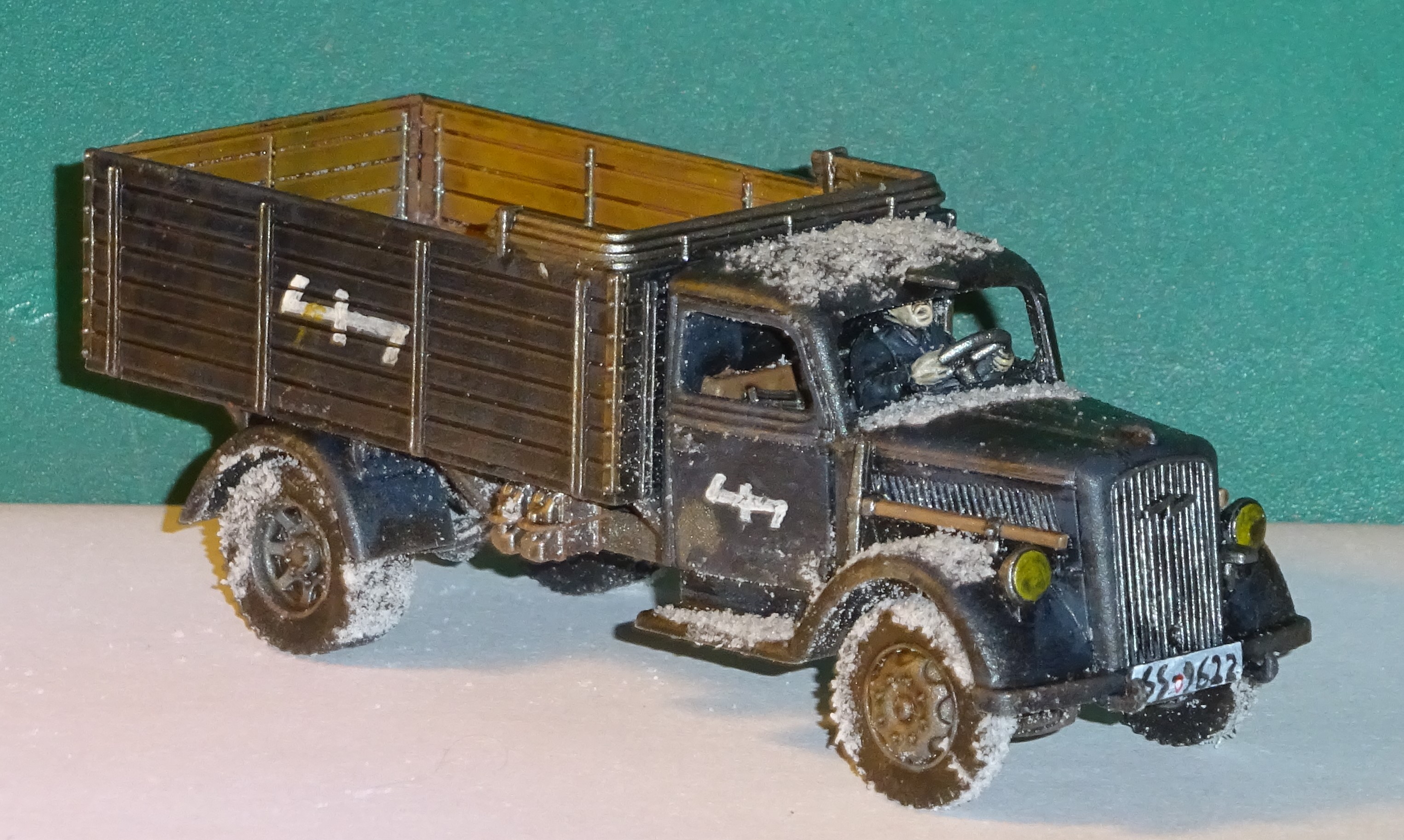

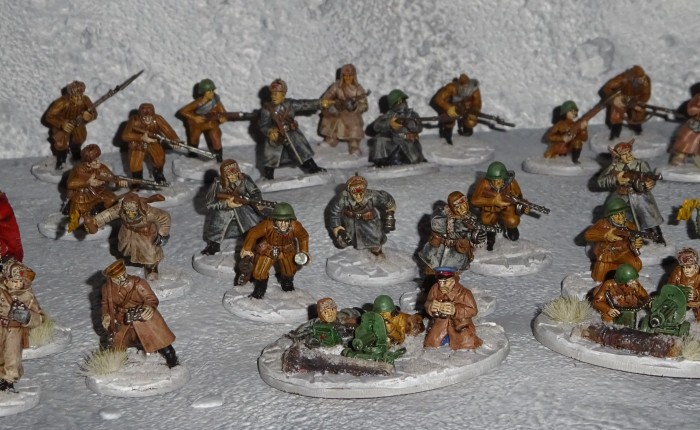


 Not so much the backbone of the army as meat for the grinder, these two units of Light Infantry are there to seize objectives and get shot at in preference to more valuable units. Most units in Xenos begin with 5 Strength Points, which in the case of regular humans tends to represent one soldier (elite troops, heroes or monstrous aliens might have a different ratio of SP to models). This unit has been upgraded in size to 10 SP, which increases its ability to absorb casualties and also marginally enhances its effectiveness in battle (ten rifles are better than five, after all). As mentioned earlier, the Recruit downgrade makes them more likely to run away when they do start taking casualties though, meaning that it’s a good idea to keep the Commander and his NKVD sidekick nearby.
Not so much the backbone of the army as meat for the grinder, these two units of Light Infantry are there to seize objectives and get shot at in preference to more valuable units. Most units in Xenos begin with 5 Strength Points, which in the case of regular humans tends to represent one soldier (elite troops, heroes or monstrous aliens might have a different ratio of SP to models). This unit has been upgraded in size to 10 SP, which increases its ability to absorb casualties and also marginally enhances its effectiveness in battle (ten rifles are better than five, after all). As mentioned earlier, the Recruit downgrade makes them more likely to run away when they do start taking casualties though, meaning that it’s a good idea to keep the Commander and his NKVD sidekick nearby. These are the guys that are the actual backbone of the army, being hardened veterans of Stalingrad, Kursk or other battles that turned the tide against the fascists. Like the rifle squads above, these veterans have been increased to 10 Strength Points, but they’ve also been bought the Armour-Piercing upgrade, representing those panzerfaust rocket-propelled grenades they’ve looted from retreating Germans. Armour-Piercing reduces the enemy’s Armour stat by 1, reducing the number of hits the unit needs to cause casualties on the enemy. I could have added Heavy Weapon to the unit as well, for the light machine gun they’ve got, but I decided to keep the unit’s cost down a bit. There’s space there for a potential upgrade later in the campaign.
These are the guys that are the actual backbone of the army, being hardened veterans of Stalingrad, Kursk or other battles that turned the tide against the fascists. Like the rifle squads above, these veterans have been increased to 10 Strength Points, but they’ve also been bought the Armour-Piercing upgrade, representing those panzerfaust rocket-propelled grenades they’ve looted from retreating Germans. Armour-Piercing reduces the enemy’s Armour stat by 1, reducing the number of hits the unit needs to cause casualties on the enemy. I could have added Heavy Weapon to the unit as well, for the light machine gun they’ve got, but I decided to keep the unit’s cost down a bit. There’s space there for a potential upgrade later in the campaign.

 That’s the end of the 24-point detachment, but I enjoyed painting the Soviets so much that I threw together a few more models. They’re not really units in their own right, but can be swapped out for individual models from other units to represent various upgrades.
That’s the end of the 24-point detachment, but I enjoyed painting the Soviets so much that I threw together a few more models. They’re not really units in their own right, but can be swapped out for individual models from other units to represent various upgrades. Although there was no space in the 24-point detachment for any vehicles, and the theme of it was a swarm of infantry, I couldn’t resist adding a tank, which can be swapped in or out of the army depending on the mission of a given game. If I expand the army to a second detachment, it’ll become a permanent presence.
Although there was no space in the 24-point detachment for any vehicles, and the theme of it was a swarm of infantry, I couldn’t resist adding a tank, which can be swapped in or out of the army depending on the mission of a given game. If I expand the army to a second detachment, it’ll become a permanent presence.